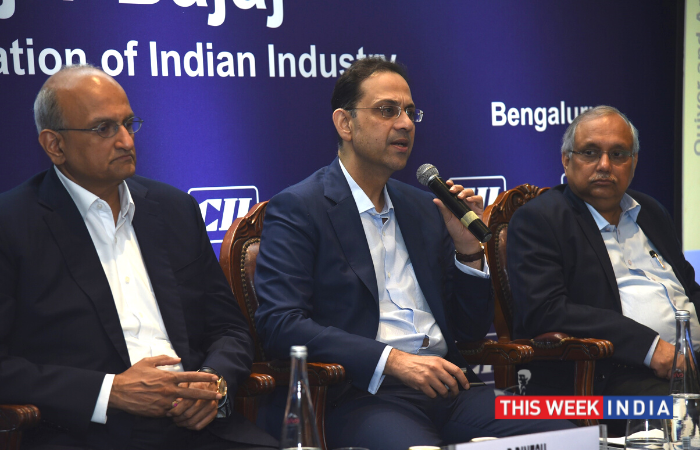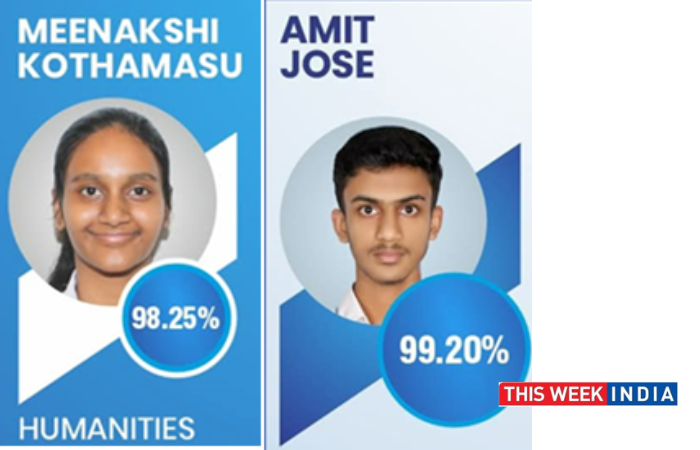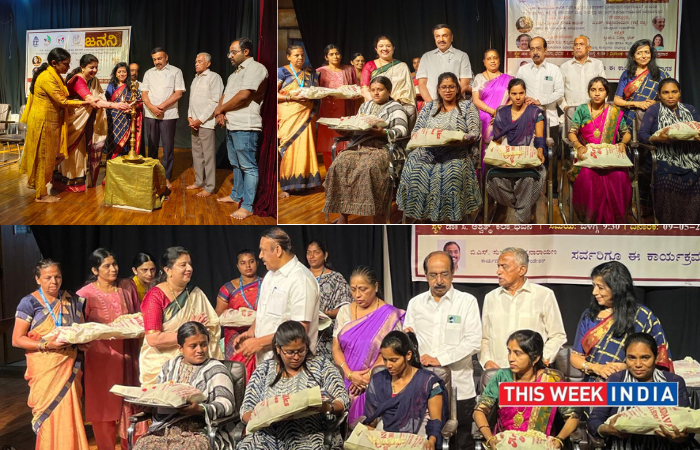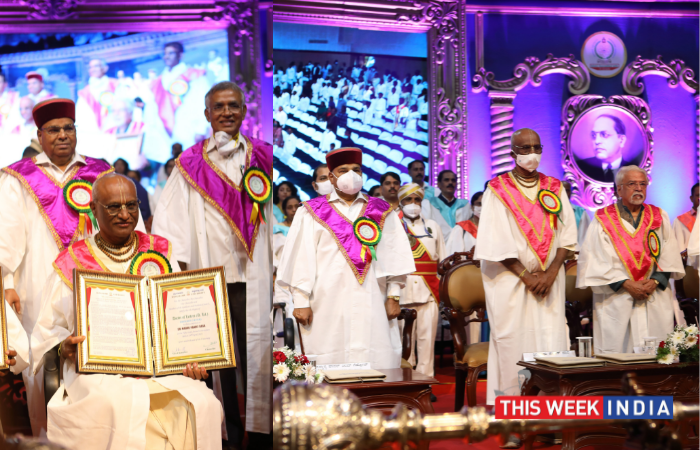India’s underlying growth drivers are strong, the economy would grow in the range of 7.4 to 8.2% in FY23: Mr Sanjiv Bajaj, President, CII
Bengaluru, 3rd August, 2022: Stating that putting more money in the pockets of the consumers is of vital importance to revive consumption demand in the economy, Mr Sanjiv Bajaj, President, CII said that the government should contemplate a reduction in the rates of personal income tax in its next push for reform as this would increase disposable incomes and revive the demand cycle. This is the first of the two suggestions offered by President, CII for providing support to economic recovery. Mr Bajaj was addressing the media for the first time at Bangalore after taking over as President CII.
Secondly, Mr Bajaj maintained that India needs to boost its forex reserves to revive the economy especially in view of the capital outflows by foreign institutional investors, prompted by an uncertain global economic environment. For this, the government should work towards inclusion of some of the large market cap companies into the global equity indices like MSCI and FTSE indices; expedite India’s entry into J P Morgan’s Global Emerging-Market Bond Index and Barclays Global Bond Index; and consider bringing out a special issue of India Millennial Bonds like was done in 2008.
Mr Bajaj also delineated short to medium term tools that could be used to catapult India into a high growth orbit. These were bucketed into four categories.
First, the President underscored the importance of expanding the Production Linked Incentive Scheme and bringing more sectors within its ambit, especially those which are labour intensive and also in sectors where our imports are high, but there is a possibility of building a competitive domestic industry. A PLI for electrolysers will help achieve India’s vision of producing 5 million tonnes of Green hydrogen by 2030 and also become an exporter of green hydrogen.
The concept of PLIs should be extended to services sectors in the form of Employment Linked Incentive Schemes (ELIs). To start with CII suggests instituting ELIs in four employment intensive services sectors, with high growth potential – Tourism, Logistics, Retail and Film, Animation and Gaming.
According to Mr Bajaj, the 5-year period of the PLI scheme should be used to mitigate some of these cost disadvantages, so that at the end of the PLIs we have a globally competitive industrial ecosystem.
Second, to bring in speed and transparency in regulatory approvals and bringing down the regulatory and compliance costs, Mr Bajaj mentioned that both the central and state approvals and compliances for new and existing businesses should be brought onto the newly launched National Single Window System (NSWS) portal. Besides, all states should be onboarded under the Gatishakti initiative for better planning and execution of infrastructure projects. Further a provision in the portal for the private sector to provide suggestions on infrastructure gaps, as an end user, could be considered for planning purposes.
Mr Bajaj also eluded to power sector reforms to remove the burden of cross subsidy on industry, and distribution reforms for improving the quality of power available are important. All fuels and electricity duty should be brought under GST to make Input Tax Credit available to industry, stated Mr Bajaj.
The R&D expenditure should be ramped up from 0.7 per cent of GDP. Besides, R & D efforts should be channelised towards industry relevant research and public Private Partnerships in R&D should be promoted, starting with the defence sector. India also needs a new design policy to replace the existing policy which was formulated in 2007, according to Mr Bajaj.
Similarly, Mr Bajaj emphasized that sustainability imperatives get integrated into business and trade for which its manufacturing sector and its infrastructure should be green. India needs sectoral net zero roadmaps, stated Mr Bajaj.
Further, sharing his concern regarding inclusive growth, Mr Bajaj articulated that credit availability is a major constraint to build a strong MSME system. To mitigate the situation, the ECLGS (Emergency Credit Line Guarantee Scheme), which was a major government initiative made during the pandemic to keep MSMEs in business should be made permanent as a government guarantee for MSME loans with the total amount of guaranteed loans at the sanctioned loan amount to MSMEs at the expiry of the current scheme on 31 March 2023.
Third, on the external front, Mr Bajaj maintained that to keep building on last year’s momentum, it is imperative that India’s export effort is led by an Export Mission comprising a National Trade Promotion Council at the centre supported by Councils at the states. These Councils should focus on developing strategies, framing policies, creating infrastructure and skill development. The Council should also be supported by specific organisations – such as overseas trade marketing offices for marketing and brand building, FTA facilitation center and enterprise training centres at industrial hubs. To meet quality requirements, more testing and certification centres at industrial hubs would be very useful.
Besides, reduction of import barriers, moving to a three-tiered tariff structure comprising of lowest or nil slab for inputs or raw materials, 2.5 to 5% for intermediates and final products in the standard slab with exception given to only few products and diversifying the export market is important. Moreover, given India’s strengths in services, these should be given greater importance in our FTA negotiations.
Fourth, the Government should form GST like Councils for consensus building between Centre and states on reforms such as land. In some areas states could be provided fiscal incentives as is being done for power.
While expressing his views on the economy, Mr Bajaj said that the Indian economy is scripting a rebound despite global turbulence and stress. Despite a challenging global backdrop, domestic economic momentum remains strong as mirrored by a slew of macroeconomic high-frequency indicators. The robust GST collections, impressive PMI for both manufacturing and services, as well as high IIP and core sector output, good monsoons and agricultural growth auger well for the economy.
Besides, the rupee, too, despite weakening remains more resilient than the previous crisis period and domestic inflation, though a headwind, remains capped compared to previous crisis period, stated Mr Bajaj.
At the same time, both Central and state capex is rising and tax buoyancy would support growth in FY23. Hence, on balance, CII has retained India’s GDP forecast in a range of 7.4 to 8.2% in FY23.
Expressing his views on the role of industry and CII in taking India to a US$ 40 trillion goal post by 2047, Mr Bajaj said that CII believes that there is a lot that industry and CII could do themselves. Mr Bajaj enunciated that CII has planned several new initiatives in the current year aligned with the current CII theme of Beyond India@75: Growth, Competitiveness, Sustainability and Internationalisation.
For instance, CII will continue to scale up its engagement in skilling and will skill 1.5 lakh youth and help place another 2 lakhs youth; improve manufacturing competitiveness by proposing to build a CoDB Index, and work with the states to strengthen the national single window system. On sustainability, CII would effect simplification of processes push for preparation of sectoral roadmaps for net zero transition for which it would be engaging with the state governments & sectors on developing `Decarbonization Road Map’ for achieving Net Zero by 2070, articulated Mr Bajaj.
For internationalization of the Indian economy, Mr Bajaj added that CII will prioritize both exports and inward and outward investments and use CII’s 8 overseas offices for further deepening and elevating our overseas linkages while on technology, the objective will to facilitate R&D spending of 2% of GDP with a higher proportion coming from industry, said Mr Bajaj.
CII Karnataka has also charted out its theme for the year 2022-23, “India@75: Karnataka – Accelerating Transformation through Innovation & Inclusion” with special thrust and focus on Policy Advocacy, Competitiveness, Inclusiveness & sectoral growth initiatives, concluded Mr Bajaj.









